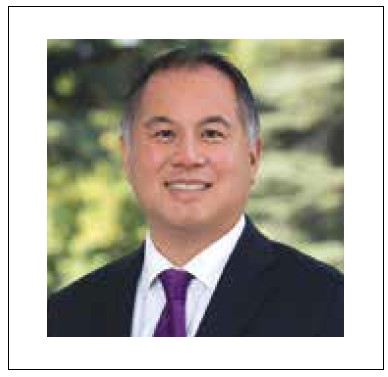
By Assemblymember Phil Ting–
It’s a sobering statistic. During the first quarter of this year, eight pedestrians were killed in San Francisco. If that pace continues, we will surpass the fatality rate set in 2022. That’s when the highest number of deaths was recorded over a five-year period. One life lost or impacted by traffic violence in our city is too many.
One promising fix is AB 645, a bill I joint-authored last year. This legislation authorizes the use of speed cameras in six California cities, including San Francisco, focusing on school and other designated low-speed areas based on their danger to pedestrians and others. This provides an opportunity to slow drivers down in our highest-need areas.
The San Francisco Municipal Transportation Agency (SFMTA) recently approved 33 locations for these speed cameras and is set to implement the five-year pilot program. Those sites are within what’s called the High Injury Network—the 12 percent of San Francisco streets that account for more than 68 percent of traffic-related severe injuries or fatalities.
Four of those cameras will be in/near LGBTQ+ neighborhoods. In the Castro, one will be at Market & Hattie Streets; the other will be on Guerrero Street between 19th and Cumberland Streets. Over in the Leather District, one will be on Seventh Street between Folsom and Harrison Streets. The second one will be located on Harrison Street between Fourth and Fifth Streets.
I championed AB 645 because speed safety systems hold great potential. They have been used for years in other major cities throughout the country, including New York City, and they have helped restore pedestrians’ right to walk across streets without fear of traffic violence. In fact, 2023 was the Big Apple’s safest year for pedestrians. Moreover, speeding has dropped, on average, by 73 percent at their speed camera locations. Over the eight full calendar years that New York City’s speed camera program has been in operation, nearly half of license plates receiving a notice have not been issued a second one.
San Francisco can achieve similar results. To ensure that everyone is part of the solution that puts prevention first, there’ll be a 30-day public education period. Adequate signage must be prominently placed in speed camera zones to create highly visible public messaging that will stop speeding in the first place. Then during the first couple of months, only warning letters will be sent to violators.
Once fully implemented, speed enforcement cameras will trigger a citation when vehicles travel more than 11 miles per hour over the posted speed limit. Those who receive one will not have their driving privileges affected. And under the law, civil fines can be reduced based on income and can be paid over time. In certain cases, they can be waived with community service.
Lastly, AB 645 strongly protects an individual’s privacy and taxpayer money. Cameras capture only the vehicle speed and registration—not the identity of the driver, other drivers on the road, or members of the public in the photo. Plus, only the driver and vehicle owner may review the photos, and local authorities may only archive the photos for a limited period of time.
To prevent the program from being a moneymaker for cities, revenue from these citations must fund the program itself with any surplus going only toward other traffic safety measures that encourage alternative modes of transport, such as biking and walking. AB 645 also aligns with the city’s Vision Zero Plan, San Francisco’s path forward to build safety and livability into our streets to protect the one million people who move about here every day.
With the lives of San Franciscans and their children at stake, something needs to change. Targeted speed safety technology is a powerful, proven tool to help us save lives and prevent serious injuries.
Phil Ting represents the 19th Assembly District, which includes the west side of San Francisco along with the communities of Broadmoor, Colma, and Daly City, as well as part of South San Francisco and San Bruno.
Published on May 9, 2024
Recent Comments